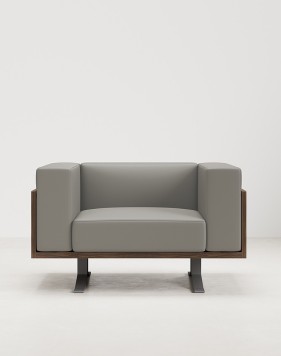Introduction:
The right workspace furniture can transform an office into an environment that boosts productivity, enhances comfort, and promotes focus. Whether you’re setting up a home office or outfitting a corporate space, carefully chosen Workspace furniture can improve your work experience, making it easier to stay organized and comfortable throughout the day.
Why Workspace Furniture Matters
Workspace furniture isn’t just about aesthetics; it plays a critical role in functionality, comfort, and ergonomics. Quality workspace furniture supports good posture, reduces physical strain, and creates a professional atmosphere that enhances productivity and employee satisfaction. From ergonomic chairs to functional desks, each piece contributes to a well-rounded, efficient workspace.
Essential Workspace Furniture Pieces
1. Ergonomic Office Chair
An ergonomic office chair is one of the most important pieces in any workspace. Designed to support the spine’s natural alignment, ergonomic chairs reduce the risk of back and neck pain, making them ideal for long hours of desk work. Look for a chair with adjustable features, such as seat height, lumbar support, and armrests, to customize your comfort.
2. Desk (Standard or Height Adjustable)
A quality desk serves as the foundation of a productive workspace. Traditional desks offer a stable surface for all work essentials, while height-adjustable desks allow users to alternate between sitting and standing, promoting movement and reducing fatigue. Consider the size of your desk and ensure it provides enough space for your computer, paperwork, and other essentials without clutter.
3. Storage Solutions (Cabinets, Shelving, and Drawers)
Efficient storage solutions help keep the workspace organized and free from clutter. Options like filing cabinets, shelves, and drawers allow you to store documents, office supplies, and personal items in a way that is both accessible and organized. Closed storage, such as cabinets, can also contribute to a clean, minimalist look.
4. Monitor Stands or Mounts
If you work with a computer, a monitor stand or mount is essential for setting your screen at eye level. This alignment reduces neck strain and enhances comfort. Monitor stands also free up desk space and can accommodate multiple monitors, making them a valuable addition for multi-taskers.
5. Lighting
Proper lighting reduces eye strain and boosts focus. Natural light is ideal, but in spaces where it’s limited, task lighting (such as desk lamps) can illuminate the workspace without causing glare. Consider adjustable lights to control brightness and focus light where it’s needed most.
6. Filing Cabinets
Incorporating filing cabinets into your workspace provides secure storage for important documents. Whether opting for vertical or lateral cabinets, choose durable, lockable cabinets to keep sensitive information safe and organized.
7. Modular Furniture
Modular furniture offers flexibility, allowing pieces to be reconfigured to meet changing needs. These adaptable pieces are especially useful in dynamic work environments where tasks and team sizes may vary. Modular desks, shelves, and seating arrangements can be customized to fit the current layout and restructured as needed.
8. Breakout Area Furniture
Breakout areas offer a space for relaxation and informal meetings. Comfortable seating, coffee tables, and collaborative furniture encourage creativity and interaction, creating a well-rounded workspace. Adding lounge chairs, sofas, or communal tables can also improve team collaboration and provide a refreshing break from the desk.
Tips for Choosing Workspace Furniture
- Prioritize Comfort and Ergonomics: Opt for ergonomic chairs, desks, and accessories to ensure physical comfort during long hours. Adjustable furniture is particularly valuable in creating a customized ergonomic setup.
- Consider Space Efficiency: Choose furniture that maximizes the use of space without overcrowding. Compact desks, stackable storage, and modular options can help maintain a clean, open layout.
- Invest in Quality: Workspace furniture is a long-term investment. Choosing quality materials and construction ensures durability, reducing the need for frequent replacements.
- Match Style with Function: Furniture should align with both the office’s aesthetics and functional needs. Sleek, minimalist designs create a professional appearance, while practical storage solutions keep the space organized.
- Plan for Flexibility: Workspace needs may evolve, especially in a growing office. Modular and adjustable furniture offers the flexibility to adapt to new requirements, from additional team members to new equipment.
Ergonomic Solutions for Workspace Furniture
Ergonomics in workspace furniture plays a significant role in reducing physical strain, enhancing comfort, and promoting focus. Here are some key ergonomic solutions:
- Adjustable Chairs and Desks: Ergonomic chairs with adjustable lumbar support and height-adjustable desks provide options to tailor your setup for comfort, reducing the risk of strain and promoting better posture.
- Footrests and Arm Supports: These accessories help create a comfortable sitting position, preventing strain on the legs, feet, and arms. Footrests are especially useful if your chair height doesn’t allow your feet to rest flat on the floor.
- Keyboard and Mouse Placement: Proper placement of the keyboard and mouse at elbow height minimizes wrist strain. Ergonomic keyboards and mouse pads with wrist rests provide added support, reducing the risk of repetitive strain injuries.
- Standing Desk Mats: Anti-fatigue mats are useful for height-adjustable desks, providing comfort during standing periods and encouraging movement.
Conclusion
Choosing the right workspace furniture is essential for creating an efficient, comfortable, and productive work environment. From ergonomic chairs and adjustable desks to efficient storage solutions, each piece of furniture plays a role in enhancing comfort, reducing physical strain, and keeping the workspace organized. Investing in high-quality, ergonomic furniture promotes a healthier work experience, boosting productivity and satisfaction. With the right selection of workspace furniture, you can create a functional and visually appealing office that meets your needs, fosters productivity, and supports your well-being at work.

